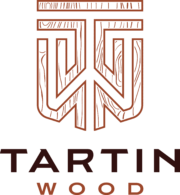
Calgary Renovation Expert: Evolution of Wood Homes: Wood has been a fundamental building material for centuries, providing shelter, warmth, and a connection to nature. The evolution of wood homes is a fascinating journey that spans across cultures and time periods, showcasing the versatility and enduring appeal of this timeless construction material. When contemplating a Calgary Renovation its helpful to know the main home styles.
Evolution of Wood Homes: Log Cabins and Timber Framing
The story of wood homes begins with the simplicity and practicality of log cabins. In the early days of North America, European settlers embraced this sturdy and straightforward construction method. Log cabins were crafted from carefully stacked logs, providing a robust structure that could withstand harsh climates.
As time progressed, the art of timber framing emerged. This technique involved constructing a framework of heavy timber posts and beams, creating a skeleton for the building. Filling in the spaces between these frames with wooden panels or bricks resulted in a durable and aesthetically pleasing structure. Timber-framed homes became popular in Europe during the medieval period and were brought to the Americas by early colonists.
The Victorian Era: Ornate Wooden Architecture
The 19th century marked a significant shift in the design and aesthetics of wood homes, especially during the Victorian era. Elaborate detailing, ornate trimmings, and the use of various wood species became prevalent. This period saw the rise of grandiose wooden mansions and intricate gingerbread houses adorned with delicate wooden lacework.
Advancements in Woodworking Techniques
As the 19th century progressed, advancements in woodworking techniques and machinery allowed for more intricate and precise designs. Steam-powered sawmills facilitated the production of standardized dimensional lumber, making it more accessible for construction. This era also witnessed the introduction of mass-produced wooden components, such as doors, windows, and moldings, which contributed to the ornate detailing seen in Victorian architecture.
Craftsman Style: Simplicity and Functionality
In response to the ornate excesses of the Victorian era, the Craftsman style emerged in the early 20th century. Championed by architects like Gustav Stickley, this movement embraced simplicity, functionality, and the use of natural materials, particularly wood. Craftsman homes featured exposed wooden beams, built-in furniture, and a focus on craftsmanship. Bungalows, a popular subset of the Craftsman style, emphasized a closer connection between indoor and outdoor living spaces.
Mid-Century Modern: Embracing Innovation
The mid-20th century brought about a departure from traditional architectural styles with the advent of Mid-Century Modern design. Architects like Frank Lloyd Wright and Eichler Homes popularized the use of wood in innovative ways. Post-and-beam construction, large windows, and open floor plans defined this style, showcasing a harmonious integration of wood and glass to create a sense of spaciousness and connection to nature.
The Green Building Movement: Sustainable Wood Homes
As environmental awareness grew in the late 20th century, the building industry began to shift towards sustainable practices. Wood, a renewable resource, gained renewed prominence in construction. Timber framing, engineered wood products, and sustainable forestry practices became key components of the green building movement. Not only did these practices reduce the environmental impact of construction, but they also highlighted the aesthetic appeal of showcasing natural wood grains and textures.
Modern Innovations: Cross-Laminated Timber and Prefabrication
In the 21st century, technological advancements have revolutionized the construction of wood homes. Cross-laminated timber (CLT), a type of engineered wood, allows for the creation of large, strong panels by stacking and gluing layers of lumber in alternating directions. CLT has become a popular choice for modern architects and builders, offering both strength and sustainability.
Additionally, prefabrication has become more widespread, with entire wood homes being constructed off-site and then assembled on location. This method not only reduces construction time but also minimizes waste and environmental impact.
Contemporary Wood Home Design
Contemporary wood homes often blend the best of traditional and modern design principles. Architects and homeowners are exploring innovative ways to use wood, combining different species and finishes to create visually stunning and sustainable structures. Wood’s natural warmth and versatility allow for a seamless integration into various architectural styles, from minimalist designs to rustic retreats.
Kitchen Renovations and Custom Design: A Modern Touch to Wood Homes
In the realm of contemporary wood home design, the kitchen takes center stage. Homeowners in Calgary, known for their appreciation of quality craftsmanship, are increasingly turning to custom kitchen renovations to infuse modern amenities into their wooden abodes. Renovation companies in Calgary are at the forefront of this trend, marrying the timeless charm of wood with cutting-edge kitchen designs.
One such trend gaining popularity is the use of Tartin, a unique material that blends seamlessly with wood in kitchen spaces. Tartin offers a durable and visually appealing surface, making it an ideal choice for countertops and kitchen islands. As homeowners embark on custom kitchen renovations in Calgary, they are embracing the marriage of traditional wood aesthetics with contemporary materials like Tartin, creating spaces that are both functional and visually stunning.
Conclusion: Calgary Renovation Expert: Evolution of Wood Homes
The evolution of wood homes is a rich tapestry that weaves together craftsmanship, cultural influences, and technological advancements. From the humble log cabin to the cutting-edge designs of today, wood has proven itself to be a resilient and timeless building material. As we continue to embrace sustainability and innovation, it’s clear that wood will remain a fundamental element in shaping the homes of the future. Whether it’s the charm of a historic timber-framed house or the sleek lines of a modern CLT structure, the allure of wood homes endures, connecting us to our architectural roots while paving the way for a sustainable and aesthetically pleasing future. And in the heart of Calgary, custom kitchen renovations are adding a modern touch to these wooden havens, showcasing the seamless integration of tradition and innovation in the homes we cherish.

Pingback: Log Cabins Overview - Tartin Wood Renovations
Pingback: Timber Frame Homes Overview - Tartin Wood Renovations